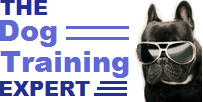For convenience, we will refer to your dog as “he”, rather than “he or she”. With this in mind here are some more tips to help you to achieve training success.
1 Have a Consistent Routine
Ideally, all training sessions should work to a plan. One of the key elements to any good plan is routine. This does not just apply to times and frequencies, but also to your general training methods, unless a particular action is not working. Routine will bring a feeling of security, and set up a relaxed but attentive atmosphere which is ideal for optomised learning. The use of a set routine will help your dog to better understand, and therefore learn, the skills that you are teaching.
2 Document What You Do
Keep a record of what is taught and what is achieved in each training session. Your comments should also note how easily your dog picked-up on the task or skill, and mention any specific difficulties that may have been encountered. Note any changes that may be beneficial.
3 Know Who Is In Charge
Both you and your dog must always know who is in charge. If you, as the trainer, forget to display those characteristics expected of all good teachers, your effectiveness will suffer. This does not mean that you cannot act in a friendly way, but that you should never loose sight of the fact that teaching and training work carries with it a certain responsibility which should always be upheld. This will ensure that you maintain a good environment for training and learning.
4 Be Confident
There is an old saying: “fake it until you make it” which often comes to mind when trying to advise new trainers. Some may not agree with this saying when it is first read, but it is really saying that you must make every effort to quickly gain confidence and display this confidence. Your dog will respond positively and your training will be more effective.
5 Listen As You Speak
Some trainers, especially new trainers, concentrate almost exclusively on what they are doing and on the resulting reactions. Too often they forget to consider their tone of voice when giving a command or instruction. Do not be hesitant and uncertain. When you speak, mean what you say and let there be no doubt about it. Both of you must know that you mean what you say.
We wish you every training success and years of enjoyment for both you and your dog.

